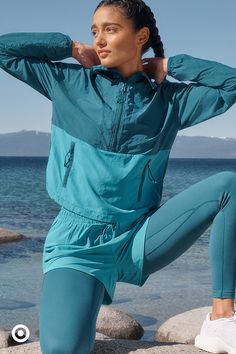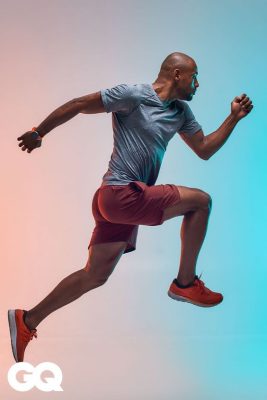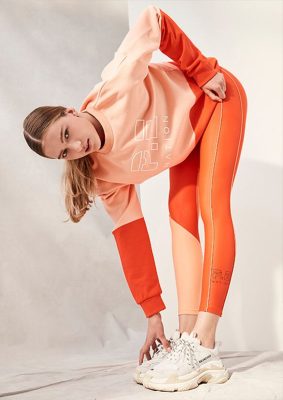Choosing the Right Fabric for Your Athletic Apparel
Are you wanting to make a purchase of top-notch athletic wear that can enhance your training experience and help you perform better? If so, the type of fabric that was used to make your outfit is one of the most crucial aspects to take into account. We’ll cover all you need to know about selecting the ideal fabric for your sportswear in this extensive guide.
Why Fabric Matters in Sportswear
The type of fabric used in athletic apparel can impact everything from the fit and feel of your clothing to its breathability, moisture-wicking abilities, and durability. By selecting the right fabric, you can optimize your performance and enjoy a more comfortable workout experience. Here are some of the key factors to consider when choosing the right fabric for your sportswear:
- Comfort
- Moisture-wicking capabilities
- Breathability
- Durability
- Stretch and flexibility

Types of Athletic Apparel Fabrics
Athletic gear can be made out of a wide variety of textiles. Among the most popular choices are:
Cotton
Cotton is a natural fiber that is soft, breathable, and comfortable. However, it also tends to absorb moisture, which can make it heavy and uncomfortable during intense workouts.
Polyester
Polyester is a synthetic fabric that is known for its moisture-wicking abilities and durability. It’s often blended with other materials to create fabrics that are both lightweight and strong.
Spandex
Spandex is a synthetic material that is highly stretchable and flexible. It’s commonly used in sportswear to provide a snug, comfortable fit that moves with your body.
Nylon
Nylon is a synthetic material that is lightweight, breathable, and strong. It’s often used in sportswear to provide a combination of durability and comfort.
Comparing Different Athletic Apparel Fabrics
When selecting athletic apparel fabrics, it can be helpful to compare their properties and benefits. Here’s a quick comparison of some of the most common fabrics used in sportswear:
| Fabric | Benefits |
|---|---|
| Cotton | Soft, breathable, comfortable |
| Polyester | Moisture-wicking, durable |
| Spandex | Stretchable, flexible, snug fit |
| Nylon | Lightweight, breathable, strong |
Tips for Choosing the Right Fabric for Sportswear
Now that you understand the different types of fabrics available for athletic apparel, here are some tips to help you choose the right one for your needs:
- Consider the activity: Different activities may require different types of fabric. For example, running apparel may benefit from moisture-wicking fabrics, while weightlifting clothing may prioritize durability and flexibility.
- Look for moisture-wicking capabilities: Moisture-wicking fabrics are designed to pull sweat away from the body, which can help keep you dry and comfortable during intense workouts.
- Prioritize breathability: Breathable fabrics allow air to circulate around your body, which can help regulate your temperature and prevent overheating.
- Choose the right fit: Athletic apparel should fit snugly but not be too tight or restrictive. Look for fabrics with stretch and flexibility to ensure a comfortable, supportive fit.
- Evaluate durability: High-quality athletic apparel should be able to withstand frequent wear and washings without losing its shape or performance capabilities.
Choosing the Right Fabric for Your Activity
The type of fabric you choose for your sportswear will depend on the type of activity you are participating in. For example, if you are running or cycling, you will need a fabric that is lightweight and moisture-wicking to keep you cool and dry. If you are playing a sport that involves a lot of contact, you will need a fabric that is durable and provides support.
Here are some specific recommendations for different types of sports:
- Running: Polyester, spandex, or a blend of cotton and polyester
- Cycling: Polyester, spandex, or a blend of wool and polyester
- Yoga: Cotton, spandex, or a blend of cotton and polyester
- Pilates: Cotton, spandex, or a blend of cotton and polyester
- Swimming: Nylon or polyester
- Football: Polyester, nylon, or a blend of cotton and polyester
- Basketball: Polyester, nylon, or a blend of cotton and polyester
- Baseball: Polyester, nylon, or a blend of cotton and polyester
- Soccer: Polyester, nylon, or a blend of cotton and polyester
Frequently Asked Questions
- Q: Can I wear cotton for workouts? A: While cotton is soft and comfortable, it may not be the best choice for intense workouts since it absorbs sweat and can become heavy and uncomfortable.
- Q: What are the benefits of polyester in athletic apparel? A: Polyester is known for its moisture-wicking abilities, which can help keep you dry and comfortable during workouts. It’s also durable and able to withstand frequent washings.
- Q: Is spandex breathable? A: Spandex is often used in athletic apparel to provide a comfortable, supportive fit that moves with your body. However, it may not be as breathable as other fabrics.
- Q: How can I ensure the durability of my athletic apparel? A: Choose high-quality fabrics that are designed for sports and fitness activities. Follow care instructions carefully and avoid washing your clothing with rough materials or at high temperatures.
- Q: What’s the best fabric for running shorts? A: Running shorts should prioritize breathability and moisture-wicking capabilities. Fabrics like polyester or nylon blends may work well for this purpose.
Conclusion
Choosing the right fabric for your athletic apparel is crucial for optimizing your performance, comfort, and overall workout experience. By considering factors like moisture-wicking capabilities, breathability, durability, and flexibility, you can select the best fabric for your specific needs and preferences. Keep these tips and comparisons in mind when shopping for your next set of sportswear, and you’ll be sure to find comfortable, high-performance clothing that helps you achieve your fitness goals.


